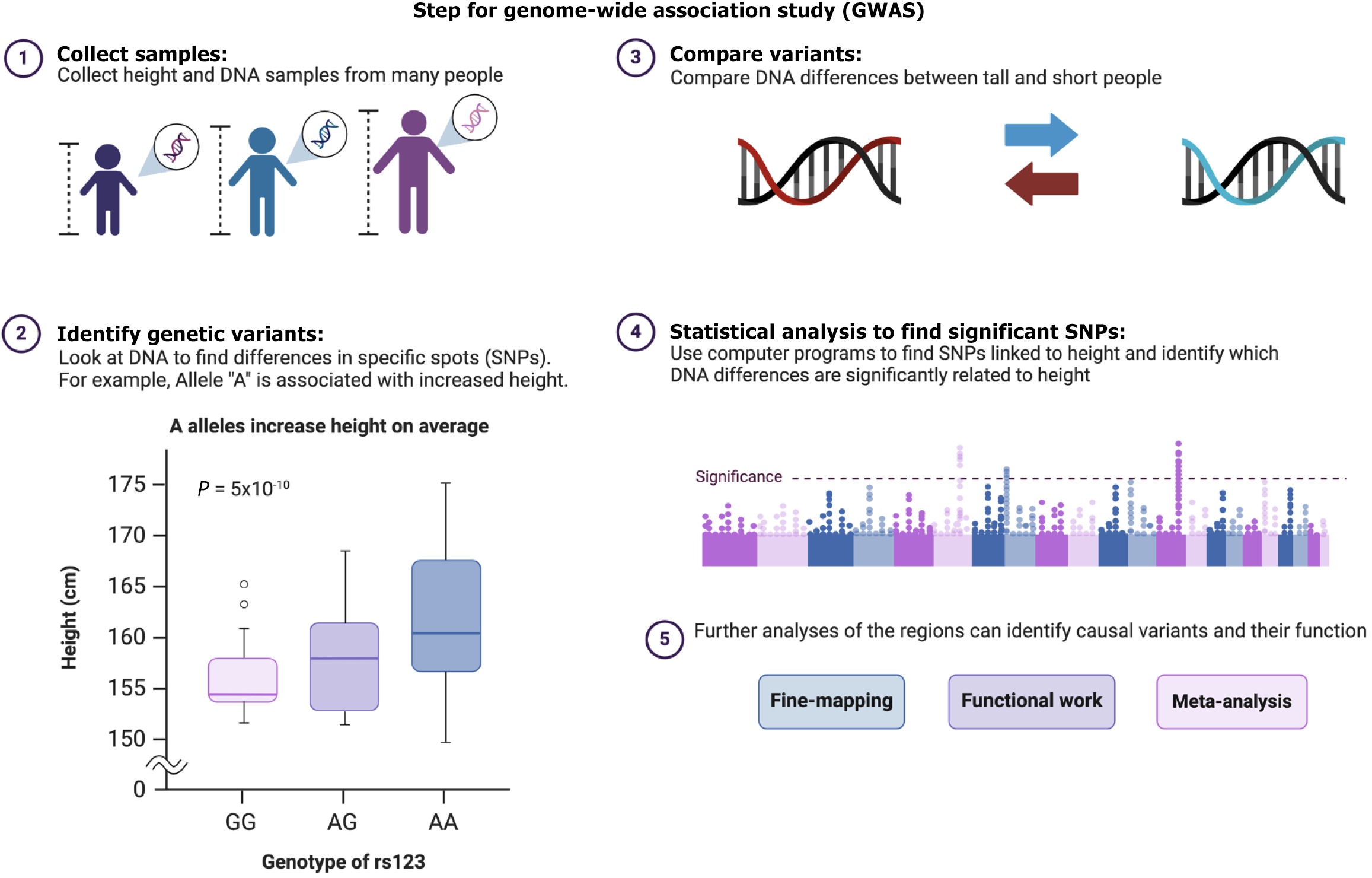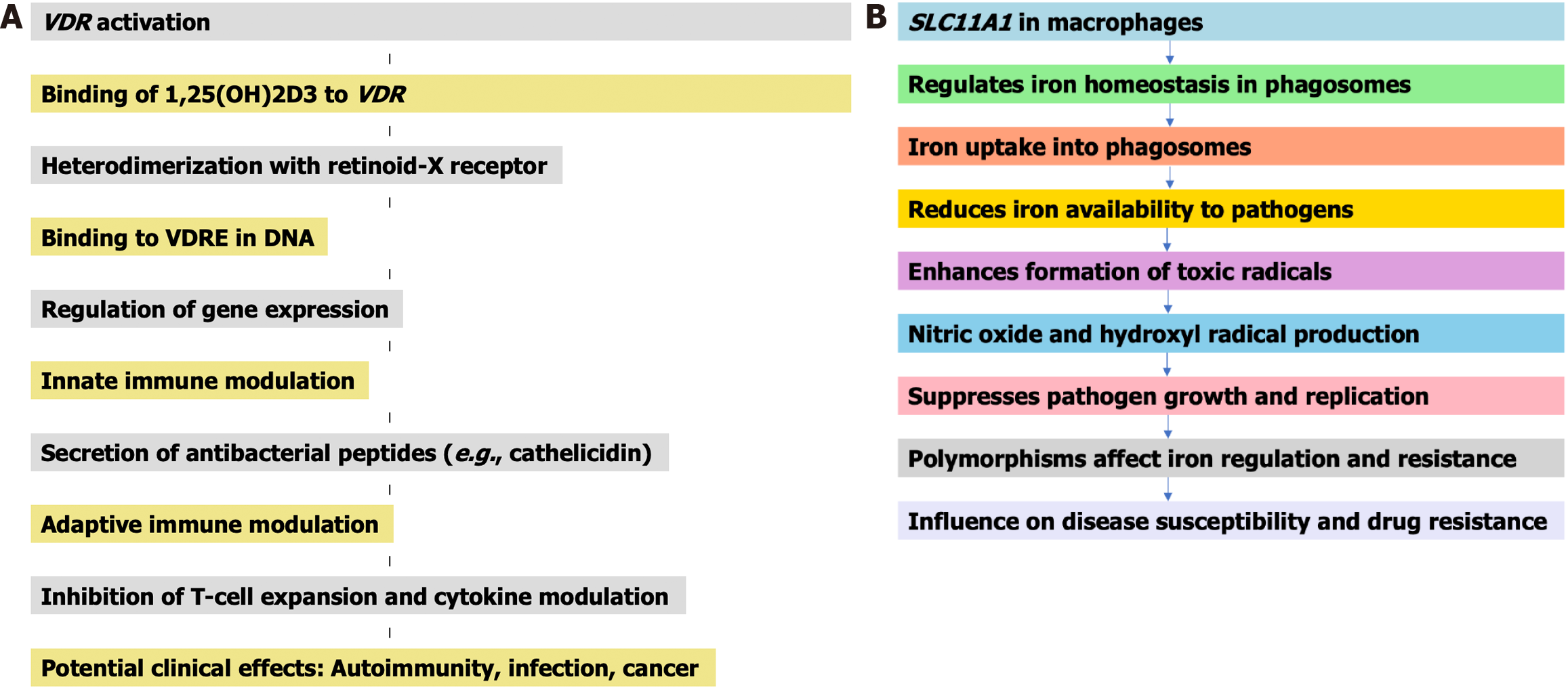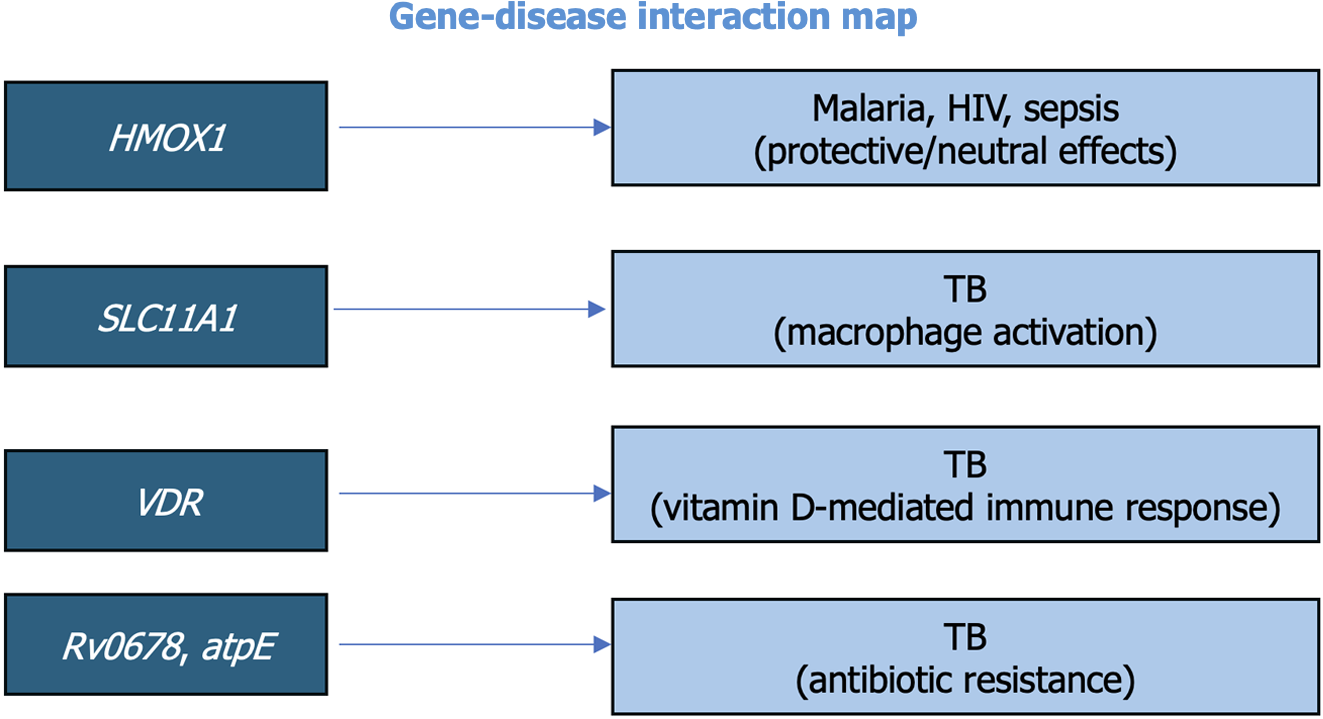Copyright
©The Author(s) 2025.
World J Clin Cases. May 6, 2025; 13(13): 101438
Published online May 6, 2025. doi: 10.12998/wjcc.v13.i13.101438
Published online May 6, 2025. doi: 10.12998/wjcc.v13.i13.101438
Figure 1 This figure illustrates the key steps involved in conducting a genome-wide association study, which aims to identify genetic variants associated with specific traits, such as height.
Figure 2 Detailed role of vitamin D receptor in immune response and elaborated role of solute carrier family 11 member 1 in immune response.
A: This flowchart illustrates the activation and immune modulation pathways of vitamin D receptor, from vitamin D receptor activation to its role in innate and adaptive immunity, secretion of antibacterial peptides, and implications for disease susceptibility and immune dysregulation; B: This flowchart highlights the role of solute carrier family 11 member 1 in macrophage-mediated iron regulation, pathogen suppression, and the downstream effects of genetic polymorphisms on resistance to infections and drug resistance. VDR: Vitamin D receptor; VDRE: Vitamin D response elements; SLC11A1: Solute carrier family 11 member 1.
Figure 3 This figure illustrates the interaction between specific genes and their associated diseases, highlighting the role of these genetic factors in influencing disease susceptibility, progression, and treatment outcomes.
HMOX1: Heme-oxygenase 1; SLC11A1: Solute carrier family 11 member 1; VDR: Vitamin D receptor; HIV: Human immunodeficiency virus; TB: Tuberculosis.
Figure 4 This figure outlines the key steps involved in metagenomic next-generation sequencing.
- Citation: Bhowmik S, Hajra A, Bandyopadhyay D. Genetic insights in infectious diseases: Insights from a case report and implications for personalized medicine. World J Clin Cases 2025; 13(13): 101438
- URL: https://www.wjgnet.com/2307-8960/full/v13/i13/101438.htm
- DOI: https://dx.doi.org/10.12998/wjcc.v13.i13.101438
















